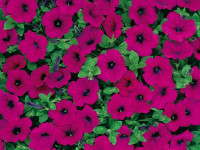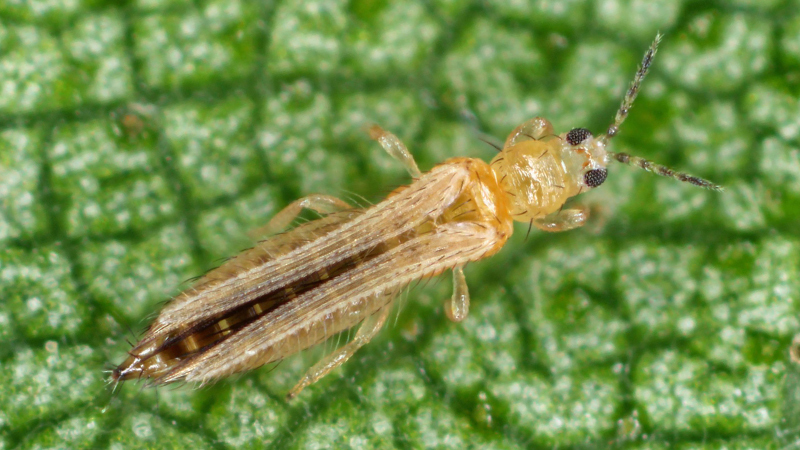Legendary Varieties

In our January issue, we rated the significance of technological innovations in greenhouse production as part of Greenhouse Grower’s 25th anniversary celebration. Last month, we asked readers at large and varieties experts to identify varieties they would consider legendary in five key crop categories: seed annuals, vegetative annuals, perennials, foliage plants, blooming potted plants and fresh cut flowers. We asked them to nominate varieties that:
– Became the industry standard
–Created new markets
–Revolutionized a genus
–Revolutionized commercial production
–Became a household name with consumers
We received the most input on seed annuals and a wide range of perennials and plan to pursue even more information on this topic. We definitely need more input on the potted plant side, both blooming and foliage.
Just in poinsettias, Ecke Ranch has introduced three legendary series of poinsettias:
Freedom–This series combined the lasting benefits from Hegg genetics and the bract color display of a V-14 to create a new look in poinsettias. Dark foliage and early flowering are additional traits. Freedom also is able to be grown in all geographic areas, which didn’t used to be the case with poinsettia varieties.
Prestige–This series improves Freedom to fit modern distribution systems. This cultivar reduced shrink by eliminating branch breakage, a key to profitability for growers and retailers. It also requires less growth regulators.
Winter Rose–The result of a 30-year vision by its breeder, Winter Rose defined the market potential for a novelty poinsettia with its curly, rose-shaped flowers.
Fresh Cut Flowers
We asked floral industry leaders Charles Kremp of Kremp Florist near Philadelphia and Red Kennicott of Kennicott Brothers Co., a floral wholesaler in Chicago, what varieties they would consider legendary.
“One variety that comes to mind is the ‘Mamie Eisenhower’ carnation,” Kremp says. “This was the first one I remember that was a bicolor. It was referred to by simply ‘Mamies.’ In roses, it was ‘American Beauty.’ Baccara roses came along as ones that would last for weeks with high tight petal count, but were not a name requested by the consumer as the other two.”
Kennicott adds that just as ‘Stargazer’ lily revolutionized the use of oriental lilies, ‘Enchantment’ did the same for Asiatic lilies.
“Picardy gladiolas were once a variety that was well recognized by consumers,” Kennicott says. “‘Bristol Fairy’ was the first of the hybrid gypsophila that are still used today. Other rose varieties include ‘Talisman’ and ‘Better Times,’ but ‘American Beauty’ is the most recognized rose variety, even though most people who are alive today have never seen it.”
More recently, ‘Million Stars’ gypsophila was a star introduction by Danziger for its branching habit.
Annuals
We received the most consensus on seed annuals. Breakthrough varieties identified by Nona Wolfram-Koivula, executive director of All-America Selections (AAS) include:
Petunia ‘Wave Purple’ from Kirin/PanAmerican Seed–This 1995 AAS winner was the first groundcover petunia with consistent flowering. Wave became an industry standard, revolutionized the genus petunia and became a household name with consumers.
Cleome ‘Sparkler Blush’ from Goldsmith Seeds–This 2002 AAS winner is the first dwarf cleome and first hybrid. Only 3 feet tall, it fits in smaller gardens or containers. It became the industry standard for hybrids and dwarf plants and created new markets for this old-fashioned flower.
Profusion zinnias from Sakata Seed–Available in Cherry, Orange and White, the Profusions took home AAS Gold Medals in 1999 and 2001. These plants are early to bloom, offer excellent garden performance and became the industry standard for disease tolerance. Normally a summer crop, these zinnias can be produced for spring flowering.
Lou Newman, the director of container sales at Florikan, nominated a pair of old standbys that have stood the test of time. “Cocktail begonias are decades old and still the standard,” he says. “Consumers ask for them by name and know the colors. Majestic Giant pansies made pansies the fall crop in the South.”
Another nomination was Super Elfin impatiens from PanAmerican Seed. The original Elfin series was bred by Claude Hope in the 1960s, and it was the first commercially available bedding-type impatiens on the market. The Super Elfins continue that legacy with modern genetics.
In the category of vegetative annuals, PanAmerican’s Drew Effron highlighted P.A.C. Elsner’s variety, ‘Kim,’ as one of the most signficant zonal geraniums.
“While working at Oglevee, I came to the conclusion that P.A.C. Kim has been the best selling zonal geranium in history,” Effron says. “Right from introduction, because it was red, ‘Kim’ became the No. 1 variety sold by Oglevee every year. I recall the number being more than two million annually. It was also available to Oglevee’s secondary propagator network, which included at least 200 growers. ‘Kim’ was also the No. 1 variety propagated by the secondary network. This was the case for about the 20-year duration of the patent.”
While geraniums were the dominant queens of the potted plant bedding business, in the 1990s we saw revolutionary new genuses in vegetative annuals.
Japanese breeder Suntory created new markets with the vigorous growing Surfinia petunias, Temari and Tapien verbenas and Million Bells calibrachoas. Ball FloraPlant created industry-leading series with AngelMist angelonias and Fiesta double impatiens. Phenomenally successful varieties from Proven Winners include Symphony osteospermums and euphorbia ‘Diamond Frost.’
Sweet potato vine ‘Margarita’ blazed the trail for more aggressive vegetative annuals with its striking, chartreuse foliage. The more compact Sweet Caroline sweet potato vines from Bodger Botanicals have been ideal for containers and come in a variety of designer colors.
Ecke Ranch also brought a wide range of Australian plants to market through a partnership with Outback Plants. The argyranthemums have been the most popular, with ‘Comet Pink’ redefining the look and the standard of the genus while expanding the market.
Perennials
We continue to see a great deal of breeding interest in many genuses and the breeders do tend to be specialists in specific genuses.
In the shrub rose category, the most revolutionary introduction has been the Knock Out roses from Conard-Pyle Co. and Novalis. The roses thrive in humid climates without spraying and offer continuous blooms without deadheading. They are a landscaper’s dream. The latest addition is ‘Pink Double Knock Out,’ which offers the layers of petals consumers love in roses.
We’re seeing a lot of interest in gaillardias, with ‘Fanfare’ from PlantHaven being the market leader with its showy tubular florets. A newer introduction is ‘Oranges and Lemons,’ which is similar but without the red coloring. Novalis is excited about its new Commotion gaillardias with a higher petal count per bloom and red and burgundy tones.
In seed varieties, Wolfram-Koivula says coreopsis ‘Early Sunrise’ was a significant introduction in 1989 as the first grown from seed without any nonflowering plants the first year. This variety set the standard for growers to produce perennials as annuals.
Heuchera has been another strong genus for innovation. Charles Oliver of The Primrose Path in Pennsylvania says ‘Montrose Ruby’ was the first hybrid between the purple-leaved and silver-patterned wild species and the starting point for all the modern hybrids. Terra Nova then took heucheras to the next level with designer colors like ‘Amber Waves’ with ruffled amber and gold foliage.
In the genus tiarella, Oliver mentions ‘Elizabeth Oliver,’ the first hybrid between the eastern wild forms with maroon foliage and the western wild forms with fancily cut leaves. “All the new hybrids that combine cut leaves with colorful patterning are derived from this cross made in the early 1990s,” he says. Terra Nova’s tiarella ‘Stoplight’ features bright yellow leaves with large red blotches.
Frances Hopkins, founder of Stepables has also created a market for creeping perennials. The best seller is isotoma ‘Blue Star Creeper,’ a consumer favorite with its hundreds of light blue flowers that can be walked on. Other top-selling Stepables are ajuga ‘Chocolate Chip’ and sagina ‘Scotch Moss.’
Did we miss your favorite legendary variety? Drop me a line at [email protected].








